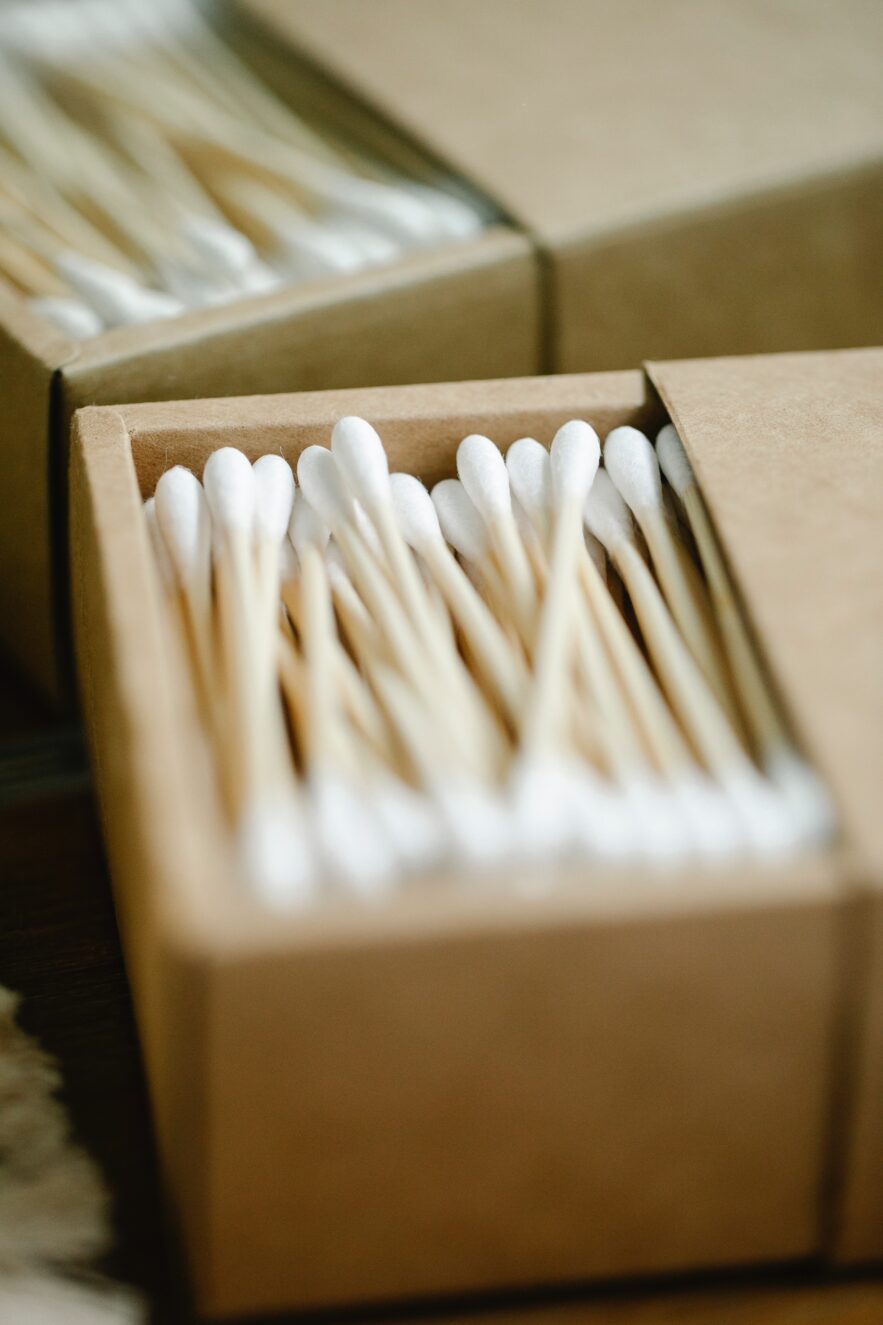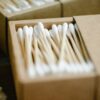Seamus Finley has had a clogged feeling in his ears for most of his life. He couldn’t wear earbuds because they’d get dirty and don’t fit correctly in his ears. But it wasn’t until he woke up one morning unable to hear out of one ear, that he considered having a healthcare professional take a look.
A provider at a nearby urgent care center removed a buildup of earwax. Then, he says, the doctor told him, “you’ve got to keep up on this or it’s going to keep doing this.”
In hopes of preventing another buildup, he now uses cotton swabs regularly, and, while he still avoids earbuds, he can hear clearly and feels much less pressure in his ears.
Still, like many others, he’s heard that cotton swabs could hurt him more in the long run. He could push the earwax further into his ear or damage his eardrum.
How Earwax Builds Up
What we typically refer to as “earwax” is actually “cerumen,” a substance excreted by cells that line our ear canals. Like all of our cells, these cells in our ear canals die and our bodies make new ones. As they die, then flake off and get pushed outward, “like a conveyor belt,” explains New York Audiologist Melissa Heche, AuD. As the cells move toward your outer ear and eventually flake off, they carry cerumen with them.
Sometimes, though, those cells end up producing cerumen faster than the turnover of cells can get rid of it. That’s when ear wax starts to build up. This can happen when items like hearing aids or earbuds block your ears, when you sleep on one side, or even if the wind is blowing in your ears. Certain conditions including autoimmune diseases like lupus, skin diseases like eczema, infections, and anatomical differences (smaller ear canal from birth or injury) can make you more prone to a buildup of earwax.
Symptoms of Excess Earwax
When extra earwax starts to build up in your ears you may feel:
- Itchiness
- Pressure
- Like your ear is clogged
- Hearing loss
Sometimes, when there is a large amount of earwax, you may even experience hearing loss, like Finley did.
“I’ve had many people come into my office who say they have sudden hearing loss and I look in their ears and I see wax, and I take it out, and like magic, their hearing is restored,” says Heche.
What You Can Do About Earwax at Home
If you start to feel some itchiness or pressure, you don’t necessarily need to run to the doctor right away. There are some things you can do at home.
1. Use a warm washcloth
You can take a thin washcloth, wet with lukewarm water, wrap it around your pinky finger and rotate it back and forth inside your ear canal. Heche explains that your pinky is large enough that you won’t be able to get far enough into your ear to cause damage like you might with other items like pens or cotton swabs. Doing this “can take out some of the excess wax on the outskirts of the ear canal and that helps move it forward,” says Heche. She adds that you should avoid using washcloths with dyes in them, and consider trying the technique during a hot shower, which helps to soften the earwax.
2. Try Ear Drops, Cautiously
Your local pharmacy shelves are probably full of ear drops promising to evacuate earwax or alleviate itch. Many of them will dry out your ears, leading to more itchiness and might even make it harder for wax to find its way out of your ear canal in the future.
Heche says she likes “Miracell ProEar” which is a mixture of natural oils that hydrates your ear canal rather than drying it out. This hydration, Heche says, helps smooth the path so you can more easily get rid of earwax naturally. [Editor’s note: MedShadow.org does not endorse any products. Heche is also not paid by or affiliated with Miracell ProEar in any way.]
3. Hydrogen Peroxide on a Cotton Ball, But Only in a Pinch
A cotton ball dipped in hydrogen peroxide and placed at the opening of your ear canal can help break down earwax that’s “impacted” (or pushed together), dense, and stuck in your ear. But Heche warns that you should not do this on a regular basis, because hydrogen peroxide is very drying and “if you dry out the ear canal, then you’re contributing to the whole issue of cerumen buildup.”
Most types of ear drops contain hydrogen peroxide, and work by drying your ear out, which is why Heche does not recommend any other than the natural oils for regular use. Additionally, hydrogen peroxide comes in varied concentrations. It’s best to use one that is diluted to a concentration of less than 10 percent.
Before buying any over-the-counter treatments or supplements, make sure you’re checking their labels for certifications that they have been evaluated by a third party for purity. Some supplements are tainted with pharmaceutical drugs and other dangerous chemicals that are not described on their labels.
“Risky substances [can] find their way into a supplement, such as heavy metals, pesticides, harmful microbes or drugs,” Michael Hull, MSc senior research manager at examine.com told MedShadow during an interview about vitamins and supplements. “These contaminants may slip in inadvertently, due to poor quality control practices, or deliberately, such as a manufacturer adding Viagra (sildenafil) to better ensure [that] their “all-natural” sexual enhancement supplement “works.” Hull adds that the supplements most likely to be tainted are herbal and ones that promise to promote weight loss or sexual function.
What Not to Do To Remove Earwax
The side effects or risk accompanying many earwax treatments are far worse than the buildup itself. Understanding these impacts is important when weighing your options for any treatment.
1. Avoid Cotton Swabs
Cotton swabs, commonly sold under brand names like Q-tips, are public enemy number one for audiologists like Heche and people prone to buildup of earwax. First, Heche explains, rather than removing wax from your ear, they can push it farther in.
“It will either be difficult or painful to remove or you can puncture your eardrum,” as a result, said Heche.
2. Skip the Candles
Heche describes candling as a fad in many spas now. Essentially, you’ll stick a hollow candle in your ear and the heat is supposed to loosen up your earwax, so it flows out easily. The thing is, says Heche, earwax isn’t actually wax. Cerumen is made of oil, water, and debris.
“Just heating it is not going to make it drip out of your ear,” she explains. “But, a huge risk for ear candling is burning the canal or burning the drum.”
When to See a Doctor About Earwax
During any regular check up your primary care provider should take a look in your ears and notice any buildup. If they don’t, ask them to. Many times, a buildup of earwax will not cause any noticeable symptoms.
“If there’s constant buildup, then the best person to take that out is either your general care practitioner, your ENT [ear, nose and throat specialist], or your audiologist who will either suction it out or or use another tool to actually physically remove it,” says Heche.






